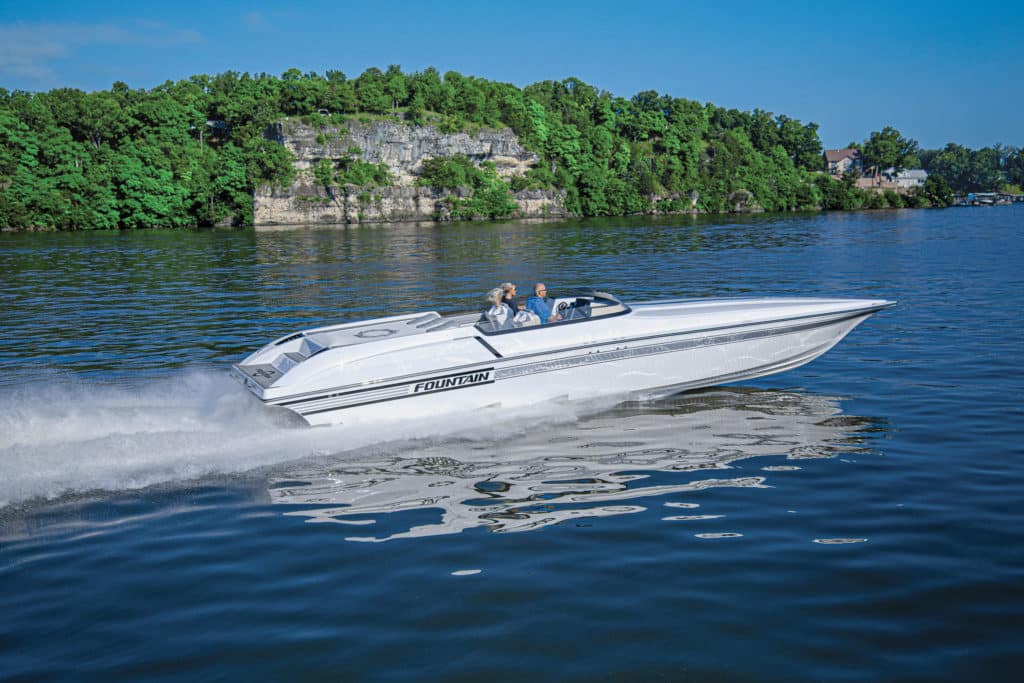
Overview
Fountain’s Chief Operating Officer Jeff Harris jumps aboard our Fountain 42-foot Lightning test boat and hurries me to hop in. As we don our vests, he plugs in the fob that changes the tune on the Mercury Racing Dual Calibration sterndrives from 1,100 horses each to 1,350 each. Whoomph—they come to life. With a lumpy-cam lope, we fast-idle away from the Iconic Powerboats dock. Spinning 36-inch-pitch propellers, the slowest idle possible is about 7 mph.
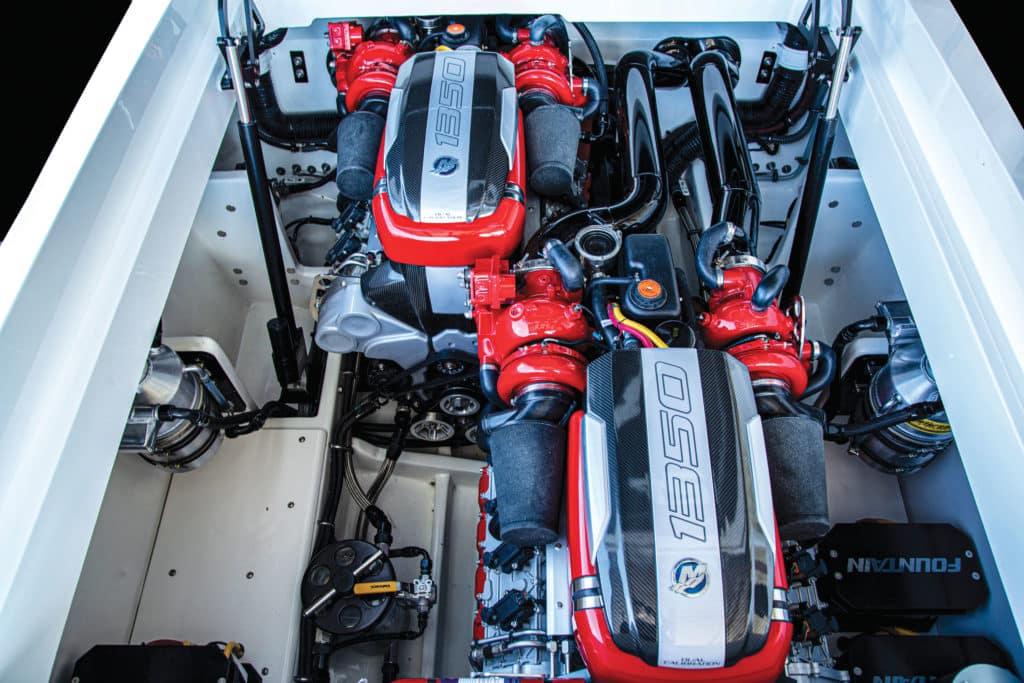
Engines
Harris eases the go sticks forward; the turbos hiss and whine, and Fountain’s trademark droop-snout bow rises and then settles as we approach 40 mph at a mere 2,500 rpm. At the most economical cruise speed, the Mercury Racing engines loaf at 3,500 rpm—but speed is a ripping 71 mph, truly illustrating that old boast, “At cruise, we’re already faster than most boats will go.”
Winds are light. Chop is just under a foot. Time to go. Harris accelerates to 5,500 rpm as we rush toward 120 mph. He nudges the tachs over 6,000, and the GPS reads 131 mph. So far, the rush of wind and the roar of engines are the only clues we’re rolling so hard; the Fountain pad is locked in tight, and the boat is stable as a rock. But now, as Harris tickles the trim, tabs and throttle together in expert fashion, my butt cheeks get tight. The stern lifts and floats, ever so slightly. The hull dances. The GPS rapidly approaches 140 mph. At a steady indicated 138, Harris finally backs the trim and throttles down, looks over and says, “There’s more, but that’s enough for today.” How much more? I’d estimate at least another 3 mph, perhaps 5, with tweaking and seat time.
Some will wonder: How fast is fast enough? Just ask! Harris notes that a few have left the plant with the more powerful 1,350/1,550 packages and can top 160 mph.
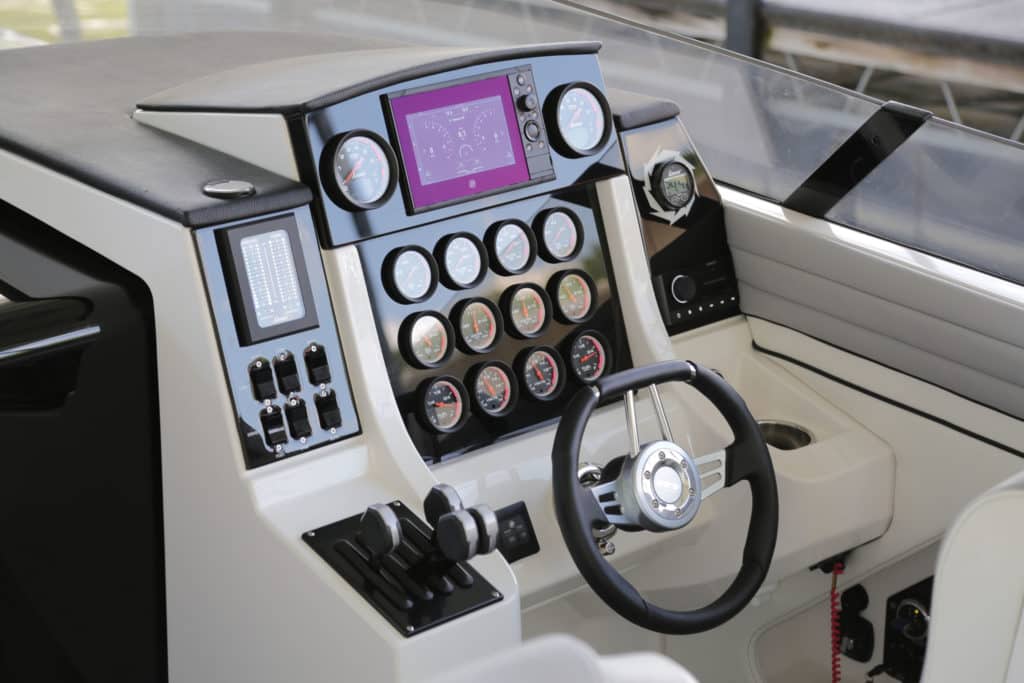
Not many owners of this boat will complain about fuel consumption with a package like this. With its 218-gallon fuel cell, you could cruise for about 223 miles at 3,500 rpm. But remember: That equals 70 mph. Chances are you’ll be cruising at 2,500 rpm or less, with occasional bursts up the speed range. Handling is exactly what’s expected from a race-proven hull: Turns are tight and G-filled, and movements are quick and responsive to driver inputs. Here’s where we must advise, of course, that potential owners understand that things come up and happen quickly at the speeds the 42 Lightning can attain, and quick inputs from the pilot are needed to avoid getting into difficult situations. Keen situational awareness is a valuable sense to have when piloting such a boat.
Planing and acceleration? Zero to 30 mph took 9.5 seconds. Accelerating with this boat is not just a “grip it and rip it” affair; the spool-up of the big Merc mills takes a soft touch until the hull is planing and the props bite. After that, the only limiter on punch and speed is your nerve. The feel is not unlike that of a multi-engine aircraft in a high-performance takeoff: a smooth, forceful rush of power.
Construction? Fountain ranks in the top echelon of boatbuilders, and the Lightning is a fine example of the company’s prowess. The hull is a race-proven, hand-laid, bonded grid structure, with its sides, deck and inner liner made from composite-core materials. The guys who lay-up, assemble and rig these boats have been at it for decades, and they know how to do it right. Close inspection reveals nothing less.
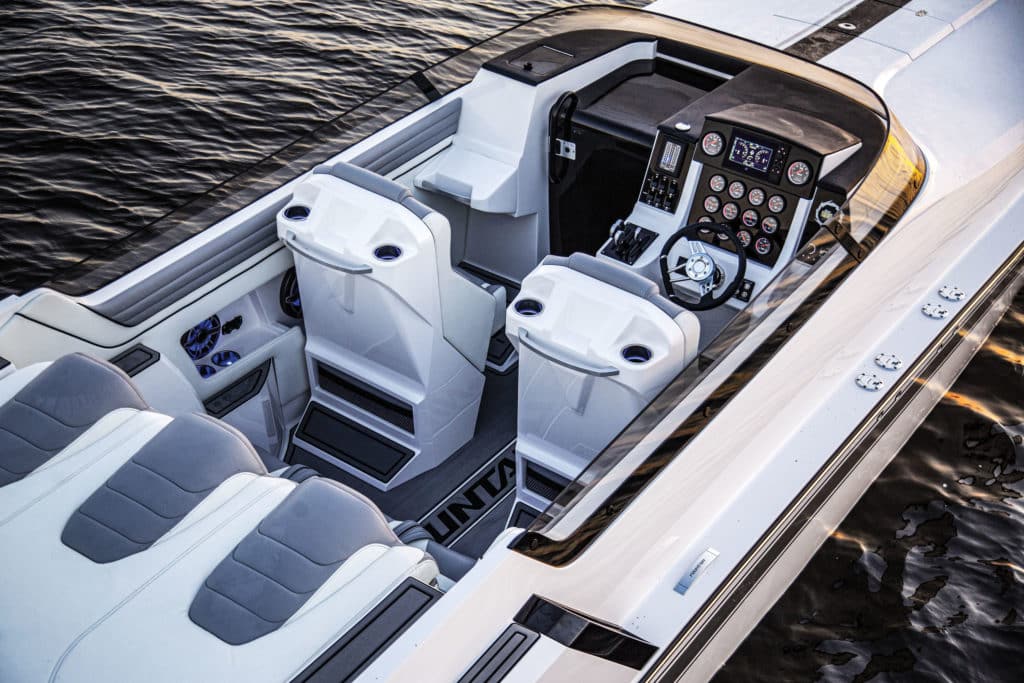
Interior and Accessories
Our tester, headed to western US waters, featured an owner-ordered clean white finish complemented by a white interior, with medium-gray accents and RGB concealed rope lighting highlighting the cockpit. Aft seating boasts body-contoured triple buckets with “chicken straps” for passengers to hold when the pucker factor gets high. Pilot and co-pilot seating features retractable bolsters, and cup holders and grab rails on the back sides for those who want to stand behind and see the action firsthand. The vinyl upholstery is well-stitched and fitted cleanly, and should stand up to many years of use.
While you’re not going to spend the summer aboard the Lightning, a night spent on the water will prove comfortable for a couple thanks to a surprisingly roomy cabin belowdecks well-equipped pretty much any way the customer can specify, within reason. Our tester featured a cedar-lined hanging locker, a pull-out refrigerator, dual sinks, a portable head, wraparound cabin seating with a center table that converts to a bed, and optional air conditioning ($11,000).
The updates to this venerable warrior make it flow with the times, and the increased performance capability is astounding considering that less than a decade ago, these hulls were typically running right in the low 100 mph range with top power.
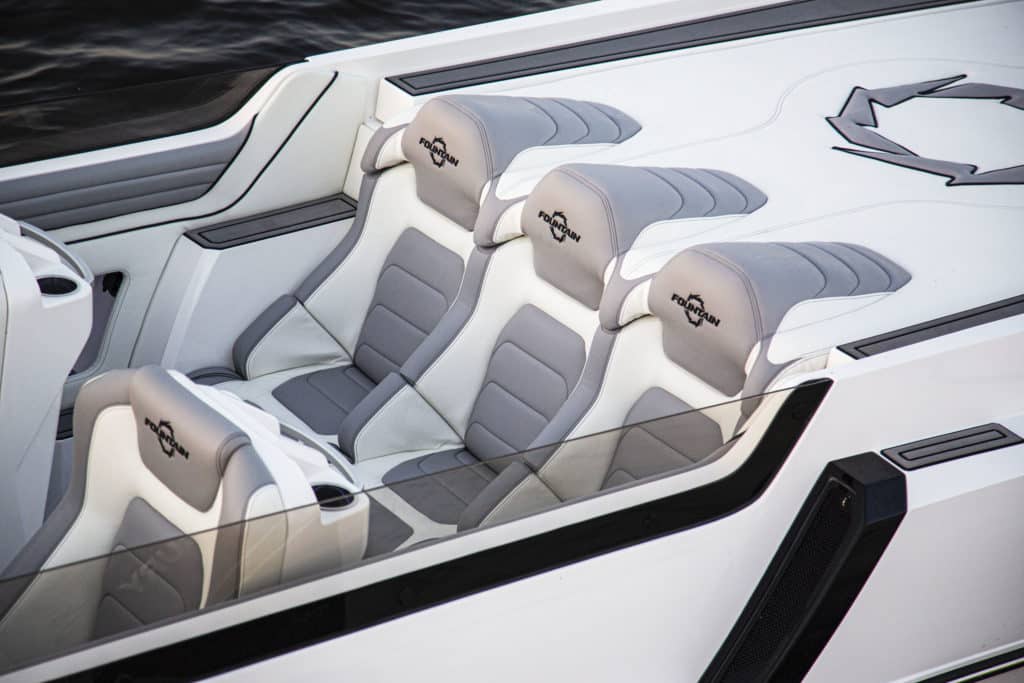
In the V-hull, ultra-performance sterndrive sportboat market, comparable hulls rigged for this kind of performance are scarce. However, Outerlimits’ SV-43 compares at 43 feet, 5 inches long and 9 feet wide, and runs comparable speeds with the same engine and drive packages. A typical SV-43 goes for about $1.1 million.
For the poker-run enthusiast and a performance-minded family, the 42 Lightning delivers in rarified air, while also providing a comfortable overnighter equally at home showing off its mind-bending capabilities or wowing the locals at the best lakeside restaurant. King of the lake doesn’t begin to describe this dude.
How We Tested
- Engines: Twin Mercury Racing Dual Cal 1,100/1,350 hp 9L (550ci) supercharged V-8s
- Drive/Props: Mercury Racing M8 racing sterndrives/Mercury Racing lab-finished 17″ x 36″ 6-blade lab-finished stainless-steel cleaver
- Gear Ratio: 1.33:1 Fuel Load: 100 gal. Crew Weight: 500 lb.
High Points
- Fountain used digital measuring equipment to redesign the hull so it’s more than capable at the increased speeds the venerable Mercury Racing mills provide.
- Hand-laid, stepped hull with a high-performance pad and a notched setback transom give the 42 Lightning solid handling at ultrasonic speeds.
- Rigging is executed in rugged offshore-racing style, making servicing easier and the engine bay a delight to show off to onlookers.
Low Points
- While the 42 is fitted for multiple crewmembers, the tight confines of the cockpit and interior make it more of a couple’s boat—although, we suspect you’ll be tapped for thrill rides.
Pricing and Specs
| Price: | $1,054,750 (base); $1,108,006 (as tested) |
|---|---|
| LOA: | 42’0″ |
| Beam: | 8’3″ |
| Draft: | 1’6.5″ |
| Displacement: | 13,500 lb. (without engines) |
| Transom Deadrise: | 23 degrees |
| Bridge Clearance: | 5’0″ |
| Max Headroom: | 4’7″ |
| Fuel Capacity: | 218 gal. |
| Max Horsepower: | 2,700 |
| Available Power: | Twin Mercury Racing sterndrives to 2,700 hp total |
Speed, Efficiency, Operation
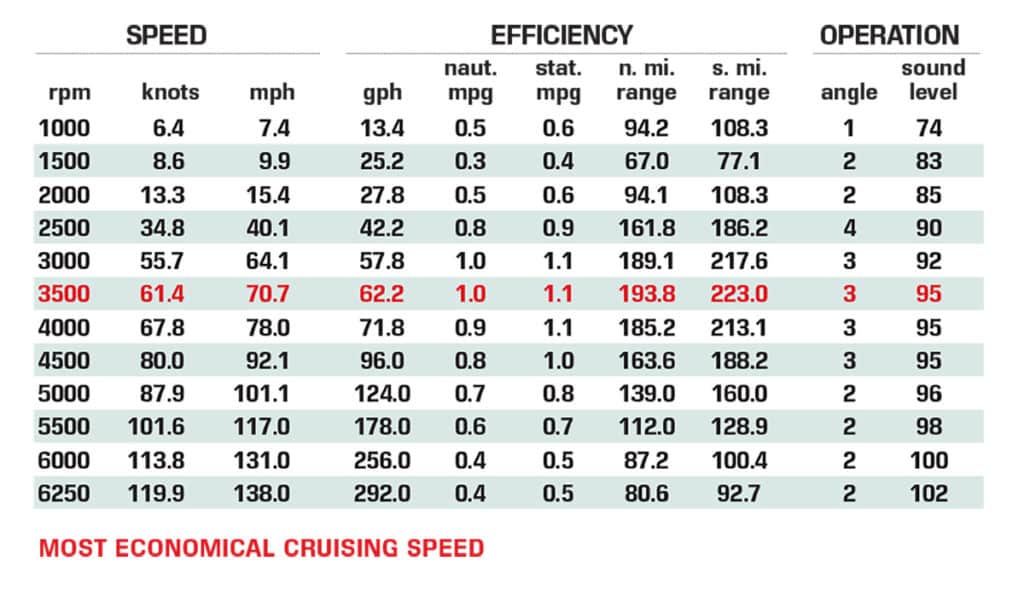
Fountain Powerboats – Chocowinity, North Carolina; 252-975-2000; iconicmarinegroup.com









